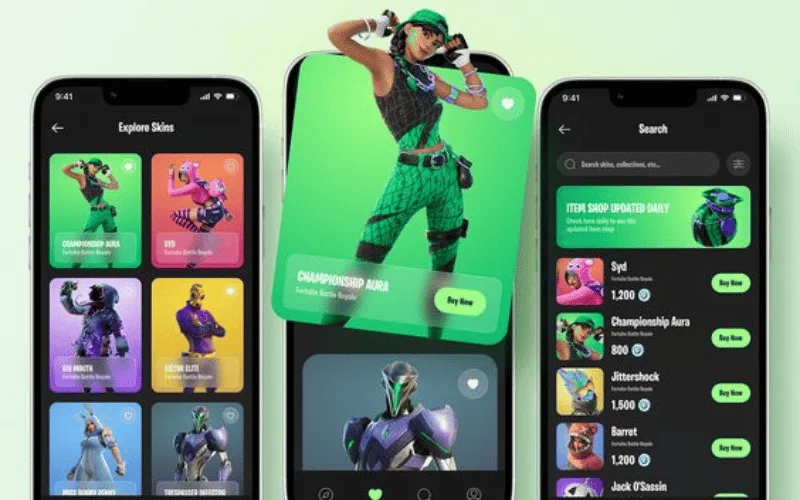The demand for fantasy sports app has skyrocketed as millions of sports enthusiasts are drawn to the excitement of building virtual teams, competing with friends, and winning prizes based on real-world sporting events. A successful fantasy sports app combines entertainment with competition, offering users an immersive, interactive sports experience. In this guide, we’ll explore what goes into developing a top-tier fantasy sports app, from core features to essential tips for success.
Understanding the Fantasy Sports Market
Fantasy sports have evolved beyond casual play, with platforms now offering real money contests across popular sports like cricket, football, basketball, and baseball. This shift has created a significant business opportunity for app developers looking to capture the market of sports fans who want to add a competitive edge to their viewing experience. With a well-developed app, users can manage their teams, track player stats, and engage in fantasy sports tournaments to win exciting rewards.
Essential Features of a Fantasy Sports App
A sports fantasy app requires certain features to provide a smooth user experience and high engagement. Here are the key elements every fantasy sports app should include:

- User Registration and Authentication: An easy sign-up process with options for email, social media, and mobile number login allows users to register quickly. Secure authentication features, such as OTPs and password protection, are essential for safeguarding user information.
- Sports Selection: A diverse range of sports choices keeps the app versatile and attracts users with various interests. Popular options include cricket, football, basketball, baseball, and kabaddi, each with different types of fantasy league structures.
- Player Selection and Team Management: Users need to be able to draft, substitute, and manage their players, making strategic decisions based on player stats, injuries, and upcoming fixtures. An intuitive interface for team management adds to user satisfaction.
- Live Match Updates and Player Stats: Real-time updates are crucial, allowing users to see how their fantasy players are performing based on real-world games. Advanced statistics and analytics help users make better decisions and keep them engaged.
- Contest Types and Prize Pools: Offering various contest types, such as head-to-head, small league, and mega contests, provides users with different ways to play and win. Prize pools can range from virtual points to cash prizes, depending on the legality in the user’s location.
- Leaderboards and Rewards: A ranking system and reward points make the app more competitive and engaging. Weekly or season-long leaderboards encourage users to keep coming back.
- Push Notifications: Timely notifications for match updates, player stats, and upcoming contests enhance user engagement, reminding them to check their teams regularly and stay active on the platform.
- Payment Gateways and Wallet Integration: Secure and multiple payment options allow users to make deposits and withdrawals safely. Integration with popular payment methods like credit cards, net banking, and mobile wallets improves the user experience.
Fantasy Sports App Development Process
Creating a fantasy sports app involves several stages, from ideation to deployment. Here’s a brief overview of the development process:
a. Market Research and Planning
Before starting development, it’s crucial to conduct thorough market research to understand user preferences, competitor offerings, and popular sports genres. Planning the app’s structure, features, and monetization strategies based on research can significantly impact the app’s success.
b. Designing the User Interface (UI)
An engaging and intuitive user interface is essential for retaining users. The design should be clean, responsive, and easy to navigate, providing users with a seamless experience across all devices. Eye-catching graphics, smooth animations, and interactive elements enhance the visual appeal.
c. Backend Development
The backend of a fantasy sports app involves setting up databases, implementing APIs for real-time data, and building a secure server infrastructure to support high traffic during live sports events. This stage requires skilled backend developers and can take time, depending on the complexity of the features.
d. Integration of APIs for Real-Time Data
A fantasy sports app must offer real-time updates on matches and player statistics, which requires integration with reliable sports data providers. APIs that provide live scores, player stats, and match analytics are crucial for a successful fantasy sports app.
e. Testing and Deployment
Testing is essential to ensure the app works smoothly and is free from bugs. Rigorous testing across multiple devices and platforms helps to identify and resolve issues, providing users with a reliable app experience. Once testing is complete, the app can be deployed on app stores for user download.
Monetization Strategies for Fantasy Sports Apps
There are multiple ways to monetize a fantasy sports app:
- Entry Fees for Contests: Charging a small entry fee for joining contests allows the app to generate revenue. Prize pools attract users, especially if the winnings are substantial.
- In-App Purchases: Offering users additional features or power-ups for a fee can boost revenue.
- Advertisements and Sponsorships: Strategic ad placements and sponsorships within the app can be profitable without compromising user experience.
Legal Considerations
Fantasy sports app development often involves legal complexities, especially when dealing with real money. Depending on the region, developers may need to acquire licenses and comply with gambling and betting laws. Partnering with legal experts can help ensure compliance and prevent potential legal issues.
Conclusion
Fantasy sports apps offer an exciting platform for sports enthusiasts to enhance their experience by building and managing their teams. Developing a successful fantasy sports app involves a deep understanding of user preferences, real-time data integration, a user-friendly interface, and effective monetization strategies. With the fantasy sports industry on the rise, investing in a well-planned fantasy sports app can open doors to a vast audience and significant revenue potential.








